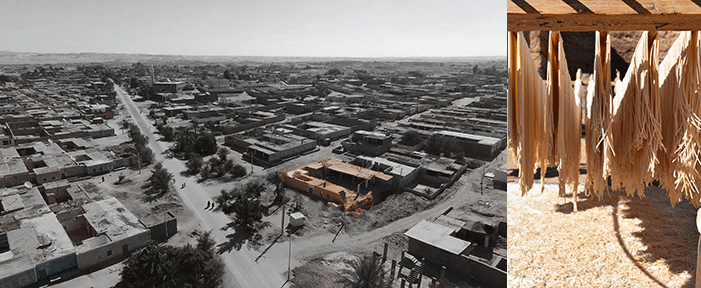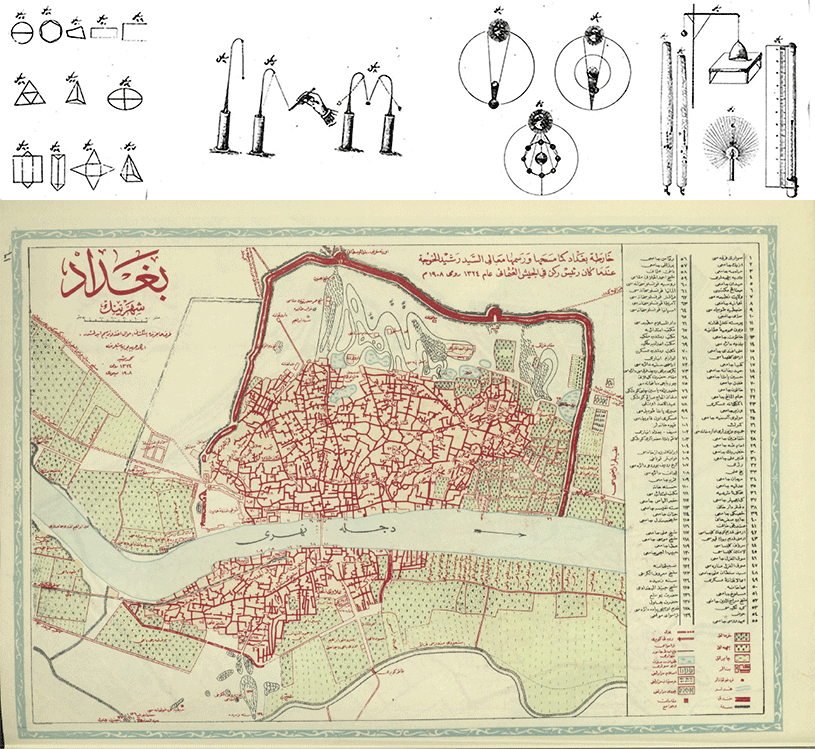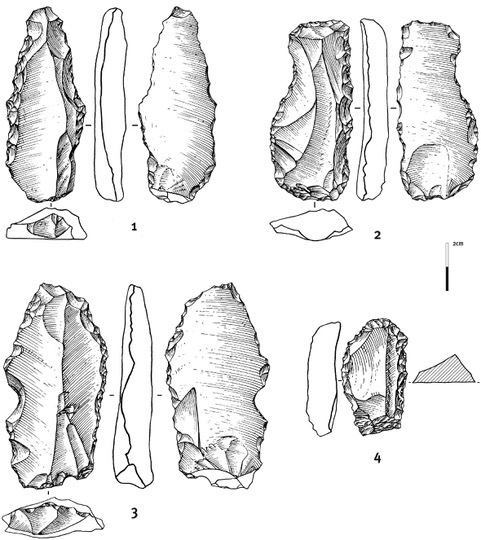Lectures, Conferences & Events» Past Lectures & Events
Menna Agha
Architect and Researcher
Azrieli School of Architecture, Carleton University
Disembodied Territoriality or how to be displaced from where you have never been?
Abstract:
This talk revolves around stories of Nubian displacement from a Nubian standpoint. Menna Agha tells a story of her people's several displacements during the 20th century from her position as a Nubian woman, a scholar, and a person displaced from where she had never been. With a focus on the 1964 displacement associated with the High Dam in Aswan, which flooded the majority of Nubian land in Egypt, She confronts the architecture of resettlement and its complicity in projects of epistemicide, displacements, and erasure. In her work, Menna searches attentively for the architecture of resistance and refusal and architectures that sit in a Nubian cosmogony—ultimately hoping to bring contemporary Nubian issues to the forefront and contemplate possibilities.
Biography:
Menna Agha is an architect and researcher. She is an assistant professor of Design and Spatial Justice at Carleton University. Menna holds a Ph.D. in Architecture from the University of Antwerp and a Master of Arts in Gender and Design from Köln International School of Design. In 2019/2020, she was the Spatial Justice Fellow and a visiting Assistant Professor at the University of Oregon. She is a third-generation displaced Fadicha Nubian, a legacy that infuses her research interests in race, gender, space, and territory. Among her publications are: Nubia still exists: The Utility of the Nostalgic Space; The Non-work of the Unimportant: The shadow economy of Nubian women in displacement villages; and Emotional Capital And Other Ontologies of the Architect.

Rana AlMutawa
Social Sciences Division
NYU Abu Dhabi
Everyday Life in the "Spectacular" City: Making Home in Dubai
Abstract:
The talks is about an upcoming book:The book is an urban ethnography that reveals how middle class-citizens and long-time residents of Dubai interact with the city’s spectacular and so-called "superficial" spaces to create meaningful social lives. It argues that residents adapt themselves to imposed spectacular structures, such as big shopping malls and new developments, while also making these same structures serve their own evolving social needs. By offering an alternative to the discourse of authenticity, elucidating the dynamics of ambivalent belonging, and theorizing adaptive agency, this book belies popular and scholarly stereotypes that portray Dubai’s developments as “inauthentic,” objectively alienating, and inherently disempowering. Moreover, it presents adaptation as a new framework for understanding how contemporary subjects operate beyond the conceptual binary of resistance and capitulation in relating themselves and their communities to the increasingly twinned developments of illiberal society and neoliberal spectacle.
Biography:
Rana is Assistant Professor Emerging Scholar of Social Research and Public Policy at NYU Abu Dhabi. I completed my doctoral degree at Oxford University in 2021. My research focuses on urban belonging, exclusion and agency in "illiberal" contexts.
Namita Dharia
Architect and Socio-Cultural Anthropologist,
Rhode Island School of Design
The Industrial Ephemeral: Labor and Love in Indian Architecture and Construction
Abstract:
Who are the millions of workers behind the aggressive urban metamorphosis of India in the twenty-first century? How are lives of those who construct architecture and urban areas entangled with the planning and development of the regions they build? Namita Vijay Dharia presents a cross-class ethnography of architects, planners, contractors, foremen, workers, and developers in India’s National Capital Region. She argues that an ephemeral atmospheric condition governs the workings of the construction industry: Ephemeral atmospheres (created through the transformation of materials and circulations of people) are not epiphenomenal to industrial operations; rather, they undergird labor politics, planning and financial systems, and operating strategies in construction. The personal histories and experiences of India's Muslim and non-dominant caste workers reveal the politics of labor and class hierarchies in design industries and challenge canonical ways of reading architecture. Worker critiques of the industry force architects to visualize a class-equitable profession that acknowledges the labor and creativity of all those who build. The talk is based on fifteen months of ethnographic research in NCR.
Biography:
Namita Vijay Dharia is an associate professor at the Rhode Island School of Design. She is an architect and anthropologist who studies urban political economy and ecology in India. Her work combines ethnographic methodologies and anthropological theory with the scalar, spatial and material approaches of architecture and design. She works across the themes of materiality and aesthetic studies, political ecology, labor studies, and planning and development politics. Dharia has practiced and taught architecture in India and the United States, worked as an architectural journalist, and collaborated on design research projects in Delhi, Allahabad, and Detroit. She is the author of the Industrial Ephemeral: Labor and love in Indian Architecture and Construction. Her second book length project studies the politics of rest in environmental and labor relations in Mumbai, India, focusing on the significance of urban and planetary rest.

Lydia Harrington
AKPIA@MIT Post-Doctoral Fellow
'Improve and Reform Them': Manufacturing Citizenship and Goods in the Vocational School of Late Ottoman Baghdad
Abstract:
This talk will analyze the building, operation, and curriculum of the state industrial school (sanayi mektebi) in Baghdad within the context of modern urban planning, Ottoman and Arab nationalisms, educational reform, and industrialization, from the 1860s to World War I. The school’s main objectives were to morally reform children who were orphans, refugees, and/or considered “delinquents” and mold them into productive citizens by offering them an academic education and training in either traditional crafts such as shoe-making or in new technologies such as printing press operation. Through consultation of photographs, architectural plans, textbooks, provincial almanacs (salname), government communications, and diaries, I demonstrate how this school was part of a broader modernizing and centralizing strategy that was increasingly centered on a Turkish, Sunni Islamic identity and moral code and sought to keep one of the most distant Ottoman cities from being lost to competing empires. This talk will also illuminate the concepts and teaching of fine and industrial arts in the nineteenth- and early twentieth-century Islamic world.
Biography:
Lydia Harrington earned a PhD from Boston University's History of Art & Architecture Department in 2022. Her dissertation analyzed late Ottoman industrial schools in Baghdad, Damascus, and Beirut within the context of modern urban planning, Ottoman and Arab nationalisms, educational reform, and industrialization. She is currently turning her dissertation into a book manuscript, with a particular focus on the definitions of and relationship between “art” and “craft.” She has extensive curatorial experience at museums in Boston and research experience at archives and sites in Turkey, Lebanon, the UK, and the US. She also researches and gives walking tours on Boston's former Little Syria neighborhood (today's Chinatown and South End).

Todd Reisz
Architect and Writer
Amsterdam
City as a Geofact
Abstract:
ge٠o٠fact
a naturally formed stone sometimes mistaken for a man-made artifact
_________________________________________
Flint or or Paleolithic spearhead?
Geofact, a portmanteau from geology and artifact, plays the phantom in archaeology. It is an object that, unremarkable in appearance, obscures any division between the “natural” and the “man-made.”
For the archeologist, the geofact is a handheld totem that wards off professional bravado. Like forgery in the art market, its presence induces doubt. Its potential lies in testing, even extinguishing, universal theories of human history.
Archeologists pursue structures that manifest the passage of time. So do architects. What might architecture learn from the other arch– profession?
What kind of cautionary tale, for example, might the geofact impart for reading a city, in determining when (and where) its architecture begins? Can prehistory rise to something more than just the preamble of history? Might it give “time immemorial” its memory back?
An emergence of prehistory can shape the way we inscribe architecture on human history, the twin flanks of which have always been migration and settlement.
To start, let’s address the history of a city not yet built.
Biography:
Todd Reisz is an architect and writer. His recent book is Showpiece City: How Architecture Made Dubai (Stanford University Press, 2020). He lives in Amsterdam.
 |
 |
| Levallois flakes from Mundafan [current-day Saudi Arabia], in chert. Based on drawing by G. Devilder, CNRS | Middle Paleolithic retouched tools from Mundafan [current-day Saudi Arabia], in chert. Based on drawing by G. Devilder, CNRS. |